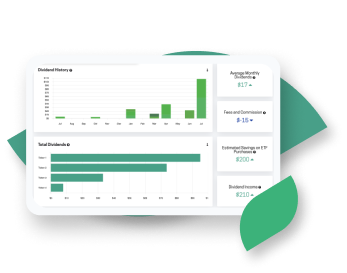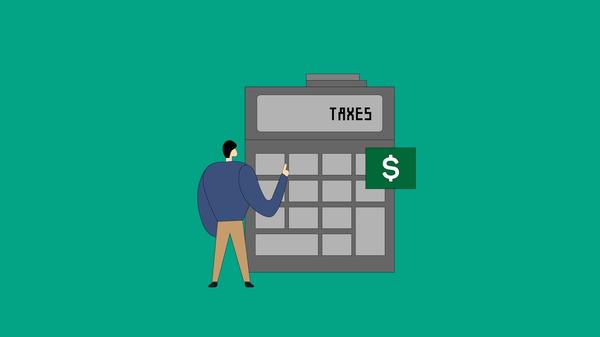There is resistance from younger investors to putting money aside for lengthy stretches of their life when they can be enjoying that money today. If you’re 30 and not planning to retire till 70, that’s a lot of time where your finances will seem out of reach. Who wants that?
Take a minute to understand the Rule of 70, also known as doubling time, and suddenly rate of return and growth rate are more engaging subjects. The Rule of 70 calculates the years it takes for an investment to double in value with a specific rate of compound returns. It is commonly used to compare investments with different annual interest rates.
This tangible evidence turns an abstract into a concrete calculation for the passive investor. Suddenly you can see how you can double your money and, perhaps, plan to stop working younger than 65. It demonstrates how a consistent rate of return can produce attractive returns and portfolio growth.
Using the Rule of 70 can also be used to calculate a range of investment vehicles from RRSPs to RESPs to First-time Home Ownership plans. As well it’s used for macroeconomic figures such as world population growth, inflation rates and gross domestic product (GDP) growth — all of which affect rates of financial return.
How Does The Rule of 70 Work?
The formula employed is to divide 70 by the annual rate of return to get the estimated number of years it would take to see the investment double in size. The higher the number of compounding periods, the greater the compound interest.
So, obtain the best annual growth rate or return rate on the investment or the variable from Questrade or your brokerage of choice. Then divide the annual growth rate or yield by 70 to see the results.
Here are some examples that show the rate of return and the importance of getting a good growth rate.
With a 3 percent growth rate, it could take 23.3 years for a portfolio to double (70/3).
With a 5 percent growth rate, it takes 14 years to double (70/5).
With an 8 percent growth rate, it takes 8.75 years to double (70/8).
With a 10 percent growth rate, it takes 7 years to double (70/10).
With a 12 percent growth rate, it takes 5.8 years to double (70/12).
The recent bump in interest rates could be a positive sign for investors, but the optimism must be tempered by the rise in inflation and cost of living. As well, variability comes into play with the Rule of 70.
For instance, the U.S. population was 161 million in 1953, and the growth rate was listed as just 1.66 percent. With the Rule of 70, the population should have doubled by 1995. Instead it only doubled in 2015 to 321 million. Since there were changes to the growth rate over time, it lowered the average rate. So the Rule of 70 was inaccurate in this case.
What Is a Limitation of the Rule of 70?
The Rule of 70 is a rough estimate that assumes an investment is compounded continuously, and that the interest is constantly added to your account.
But most savings accounts compound interest monthly, not constantly. A regular GIC is only compounded once a month, so it's not truly continuous. This happens because there's usually a set interest rate, and the investor doesn't touch it for the term's length.
The Rule of 70 slightly underestimates how many years it takes for it to grow. This distinction becomes apparent when dealing with higher rates of return, such as 10 percent or more. This is significant if the investor is estimating investment growth, such as mutual funds or stocks or is looking for an aggressive return.
Most savings accounts or GICs won't change your interest rate during the term of the offering, but that can happen. Year after year, a stock portfolio can have a different annual rate of growth and return.
Additionally, as demonstrated in the previous example, rates with many associated variables (ie. more macro economic) are subject to larger variations and outcome.
It’s important to note it's nearly impossible to predict for the upcoming year with accuracy. It's best to recalculate the Rule of 70 regularly when the annual rate of return changes.
7 Ways to Use The Rule of 70
While still a rough estimate, the Rule of 70 is an accepted way to quickly and easily manage exponential growth without complex procedures. The Rule of 70 can be applied to a number of investment vehicles to ensure a steady rate of return. Here a few examples.
RESP (Registered Education Savings Plan)
As opposed to RRSPs and TFSAs, an RESP is governed by the time period before a child is eligible to use it for education. How much would be needed to double your investment when saving until 18 years for a child’s education? Using the Rule of 70 and current rates of return parents or guardians can map out the return needed for tuition or educational costs.
If you wanted to send your child to a university with a four-year total tuition and residential cost of $60,000, you would need an initial investment of $30,000 (Rule of 70 -> 60,0000 / 2). But what annual rate of return would you need to double that initial investment?
By altering the equation to divide the rule of 70 by the timeframe, you would determine the annual rate of return you would need:
70 / 18 years = 3.8% annual rate of return
At a 3.8% annual rate of return, your $30,000 investment could grow to cover the cost of a four-year post-secondary education in eighteen years.
FHSA (First-time Home Savings Account)
As happens with RESPs, the Rule of 70 can determine how much you need to invest to double your investment for a down payment on a house in a specific timeframe. Determine your financial goal, obtain a solid rate of investment return, use the Rule of 70 and you can gain a solid idea of how much you can apply to purchase a new home. Using new home ownership plans like FHSA can also help defer taxes to a later date when the plan is collapsed.
For example, if you wanted to buy a home in ten years using a downpayment of $70,000 (20% down on a home worth $350,000) and wanted your initial investment to double, you know you would need an initial investment of $35,000 (70,0000 / 2). But what annual rate of return would you need to double that initial investment?
By altering the equation to divide the rule of 70 by the timeframe, you would determine the annual rate of return you would need:
70 / 10 years = 7% annual rate of return
At a 7% annual rate of return, your $35,000 investment could grow to be the size of the downpayment you need ($70,000) in ten years.
Market Fluctuations
Markets are cyclical and make predictions tricky. If you are an aggressive investor how long would it take for your investments to double in a Bear market? How long would it take for your investments to double in a Bull market? The Rule of 70 gives you a target for growth based on annual interest rates. Finding a consistent 7 percent growth rate will get you close to doubling your investment.
Inflation Changes
With the recent jump in interest rates after a sustained period of record low rates, higher prices via inflation can halve the value of savings. The investor (within a reasonable range of, say, under 50 years) can protect their gains by dividing 70 by the annual inflation rate to determine how much of your savings are being minimized by inflation. Using that calculation they can find ways to protect their investments.
70 / 3% (inflation) = 23.3 years
Using this equation, you can see that it would take 23.3 years for your initial investment to be halved by inflation if you weren’t to invest another dollar.
Aggressive Portfolio Growth (high risk)
Investments can range from very passive to highly aggressive. How long would a very aggressive portfolio take to double using, say, 90 percent equity. Younger investors have more appetite for risk, because their retirement portfolio estimate is measured by decades. Aggressive investment requires risk, but should still be used within a diversified portfolio.
For example, using the equation you can get an idea of how aggressively you could seek to double your investment by inputting the rate of return you would pursue.
70 / 15% = 4.6 years
70 / 12.5% = 5.8 years
70 / 10% = 7 years
Passive Portfolio Growth (low risk)
As opposed to aggressive risk, a passive portfolio (say 90 percent bonds, fixed income, etc.) typically emphasizes a cautious, diversified mix of bonds, GICs and other fixed vehicles. For an investor using a cautious approach, the Rule of 70 can show how long a passive portfolio takes to double.
For example, using the equation you could get an idea of just how long it would take to double your investment if you wanted to be conservative when pursuing a specific rate of return.
70 / 4% = 17.5 years
70 / 3% = 23.3 years
70 / 2% = 35 years

Reach Your Investing Goals
The Rule of 70 is great for goal setting - Passiv is great for goal reaching. Build multi-account portfolios and make all your trades in one-click, saving you time and money.
Get StartedCash in Savings Accounts
Savings account rates at Canadian financial institutions are among the most conservative savings vehicles. After a sustained period of very low returns, rates have grown in the past 18 months., Assuming the conservative nature of these accounts, how long would it take to double your investment in a savings account at current average rates? Expect a longer timeline if using rates of 3 or 4 percent return.
70 / 4% = 17.5 years
The Rule of 69 Or 72
Sometimes, people can use a rule of 69 or the rule of 72. The function is similar for these as with the rule of 70. However, it divides by 69 or 72 in place of 70 for the calculations.
Ultimately, the rule of 69 is more accurate when focused on continuous compounding double time. A Rule of 72 might be more accurate for compounding intervals that happen less frequently. There is a various number of years that can be used for doubling time.
Conclusion
As you have seen, the Rule of 70 isn't only a useful shorthand calculation - it is a key tool for mapping out multiple investment strategies. It's perfect for road mapping how to reach your goals.
We can use the Rule of 70 to determine how aggressive or conservative we need to be to reach certain goals we may have for investment gains. If we want to buy a house, or invest in our child's education, or if we just want to make a certain amount for retirement, we can use the Rule of 70 to determine how we can hit those goals.
There are many applications for the Rule of 70, if you take a minute to do the very simple math. So, time to start doubling.


